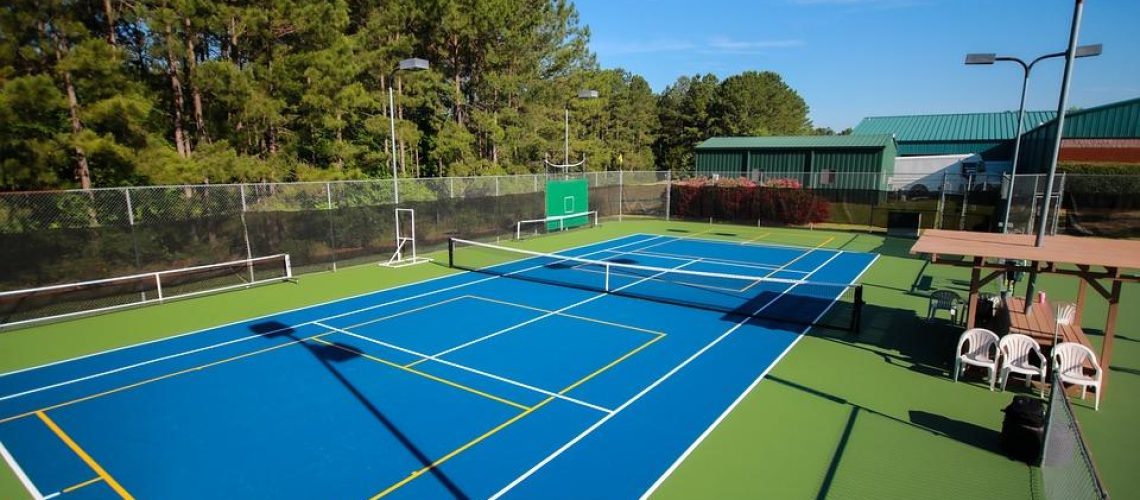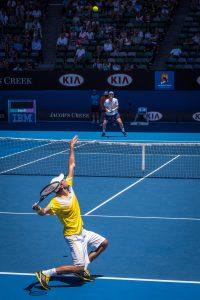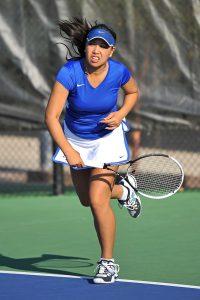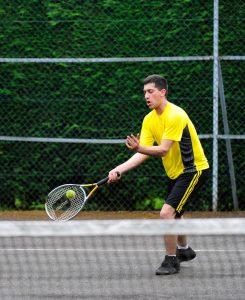We may earn money or products from the companies mentioned in this post.
Introduction

A good tennis serve is a crucial aspect of the game that can make all the difference between victory and defeat It is not just about hitting the ball over the net, but rather, it sets the tone for the entire game A powerful and accurate serve can intimidate opponents and give the server a significant advantage
Importance of a good tennis serve
A well-executed tennis serve sets the stage for the rest of the match It is often the first impression that players make on their opponents, showcasing their skill and confidence right from the start A strong serve can immediately put pressure on the receiver, making them more likely to make mistakes or struggle to return it effectively
Moreover, a good tennis serve provides an advantage to the server themselves By having control over their serves, players can dictate how each point unfolds They can strategically place their serves in areas that are difficult for opponents to return or use variations in spin and speed to keep their opponents off balance
Different types of serves in tennis
Tennis offers a variety of serving techniques, each with its own unique characteristics:
-
Flat Serve:
The flat serve is known for its power and speed This type of serve travels straight through the air without much spin or curve, making it challenging for opponents to read and return effectively -
Slice Serve:
The slice serve involves hitting the ball with sidespin, causing it to curve away from opponents after crossing over the net This type of serve is great for creating angles on court and forcing opponents wide out of their comfort zone -
Kick Serve:
The kick serve utilizes topspin to create an upward bounce after crossing the net This serve can be particularly effective on clay courts as it tends to bounce higher and kick off the surface, making it difficult for opponents to control their returns
By mastering different types of serves, tennis players can keep their opponents guessing and gain a significant advantage in matches The ability to mix up serves and execute them with precision adds an element of unpredictability to the game, making it more challenging for opponents to anticipate and counter effectively
The Basics of Tennis Serve Technique

When it comes to the tennis serve, mastering the basics is crucial for developing a powerful and accurate shot Two key elements to focus on are the grip and stance Let’s dive into each one and explore how they contribute to a successful serve
The Grip and Stance
1 Eastern Backhand Grip for Serving
The grip you use for your serve can significantly impact your performance on the court The Eastern backhand grip is commonly recommended for serving due to its versatility and ability to generate power
When placing your fingers on the racket handle, ensure that your index knuckle is aligned with the third bevel of the handle This position allows for optimal leverage during the swing
Finding your ideal grip strength is also essential You want a firm grip without being too tense, as excessive tension can hinder fluid motion Experiment with different levels of pressure until you find what feels comfortable and secure
2 Proper Stance for Serving
Your stance plays a vital role in providing stability and balance throughout your serve motion
There are two main types of stances: platform and pinpoint In a platform stance, both feet remain parallel to each other, providing a solid base On the other hand, a pinpoint stance involves positioning your front foot slightly ahead of the other, allowing for greater rotation and weight transfer
Regardless of which stance you choose, it’s crucial to align your feet with both the baseline and target area where you want the ball to land This alignment helps maintain proper body positioning throughout the entire serve motion
Ball Toss and Timing
1 Importance of Consistent Ball Toss Height
One of the most critical aspects of a successful serve is having a consistent ball toss height A consistent toss ensures that you have enough time to position yourself correctly and execute the stroke with precision
Practice tossing the ball to a comfortable height that allows you to make contact at the optimal point, usually slightly in front and above your hitting shoulder By consistently reproducing this toss height, you’ll develop better timing and control over your serve
2 Tips for Improving Ball Toss Consistency
If you’re struggling with a consistent ball toss, here are some tips to help improve your accuracy:
- Focus on releasing the ball from the same spot every time you toss it
- Avoid excessive upward or sideways movement during the toss
- Keep your eyes on the ball throughout its trajectory
- Practice tossing against a wall or using targets to enhance your aim
3 Timing: When to Initiate the Swing
Timing is crucial for executing a powerful serve As soon as you release the ball during the toss, it’s essential to initiate your swing without any delay The goal is to synchronize your body movements with the descending path of the ball, maximizing power and accuracy
The precise moment when you start your swing will depend on various factors such as personal preference, racket speed, and court conditions Experimentation and practice will help you determine what timing works best for you
In conclusion, mastering the basics of tennis serve technique is vital for elevating your game on the court Paying attention to both grip and stance, as well as developing consistency in ball toss height and timing, will pave the way towards a more effective and powerful serve
Improving Your Serve Power and Accuracy

When it comes to serving in tennis, having both power and accuracy is essential A strong serve can help you gain control of the game, while accurate placement can keep your opponent on their toes In this article, we will explore some effective strategies to enhance your serve power and accuracy
Strengthening shoulder, arm, and leg muscles
To generate more power in your serve, it’s crucial to strengthen the muscles involved in the motion Focus on exercises that target your shoulder, arm, and leg muscles These exercises can include weightlifting for the upper body and exercises like lunges or squats for lower body strength
1 Exercises that focus on these muscle groups:
Incorporate exercises such as dumbbell shoulder presses, tricep dips, bicep curls, and leg presses into your workout routine These exercises specifically target the muscles needed for a powerful serve
2 How often should you perform these exercises?
Aim to perform these strengthening exercises at least two to three times a week, allowing enough time for rest and recovery between sessions
Practice drills to improve power
In addition to building strength, practicing specific drills can help you develop more power in your serve
1 Progressive practice swings:
Start with slower swings focusing on technique and gradually increase the speed and intensity over time This progressive approach allows you to build up power without sacrificing form or risking injury
2 Burst training drills:
Incorporate short bursts of intense practice where you aim to generate maximum power in each serve attempt This type of training helps condition your muscles for explosive movements during a match situation
Practice drills to improve accuracy
While power is important, accuracy is equally crucial to hit your intended targets on the court
1 Target practice using cones or markers:
Set up targets using cones or markers on the court and aim to hit them consistently with your serves This drill helps train your muscle memory and improves your ability to place the ball accurately
2 Varying your targets during practice sessions:
To simulate real-game scenarios, switch up your targets during practice sessions Aim for different areas of the service box or challenge yourself by hitting specific corners This variation will enhance your ability to adapt and deliver accurate serves in various situations
Incorporating these strategies into your training routine can significantly enhance both the power and accuracy of your serve Remember, consistency and regular practice are key to improving these skills over time!
Pro Tips and Strategies for Serving Success

Mastering different types of serves is essential for any tennis player looking to elevate their game By having a variety of serves in your repertoire, you can keep your opponents guessing and gain a competitive edge There are several types of serves to master, including the flat serve, slice serve, kick serve, and topspin serve Each serve has its own unique characteristics and can be used strategically during a match
When to use each type of serve in a match
The timing and situation play a crucial role in determining which type of serve to use during a match The flat serve, known for its power and speed, is often employed when aiming for an ace or forcing weak returns from opponents On the other hand, the slice serve is effective in drawing opponents wide off the court or setting up opportunities for easy winners The kick serve is utilized when you want to generate extra spin and bounce, making it harder for your opponent to return with precision Lastly, the topspin serve is great for adding depth to your shots while keeping them well within the baseline
Adapting your serve based on opponent’s strengths/weaknesses
An important aspect of serving success lies in adapting your strategy based on your opponent’s strengths and weaknesses By studying their playing style before a match or even during warm-up sessions, you can identify areas where they may struggle or be vulnerable For example, if your opponent struggles with high-bouncing shots, employing a kick serve could disrupt their rhythm and force errors on their part Conversely, if they struggle with low balls or backhand returns, utilizing a slice serve towards their weaker side could give you an advantage
Mental preparation before serving

Serving under pressure requires mental fortitude and a calm mindset Visualization techniques can be incredibly helpful in mentally preparing yourself before serving By visualizing successful serves and imagining the desired outcome, you can boost your confidence and enhance your focus Additionally, managing nerves under pressure is crucial to maintain composure during important points Breathing exercises, positive self-talk, and focusing on the process rather than the result can help alleviate nerves and improve your serving performance
Visualization techniques
One effective visualization technique is to imagine yourself executing a perfect serve with precision and accuracy Visualize the ball leaving your racket at just the right angle and landing exactly where you intended it to land By repeatedly visualizing successful serves, you are training your mind to believe in your ability to execute them flawlessly during a match
Managing nerves under pressure
Serving under pressure can trigger nervousness and anxiety, which may affect your performance To manage nerves effectively, focus on deep breathing exercises that help calm both the mind and body Take slow, deliberate breaths before each serve to center yourself Additionally, engaging in positive self-talk by reminding yourself of past successful serves or reaffirming your abilities can boost confidence levels
Common mistakes to avoid when learning the tennis serve
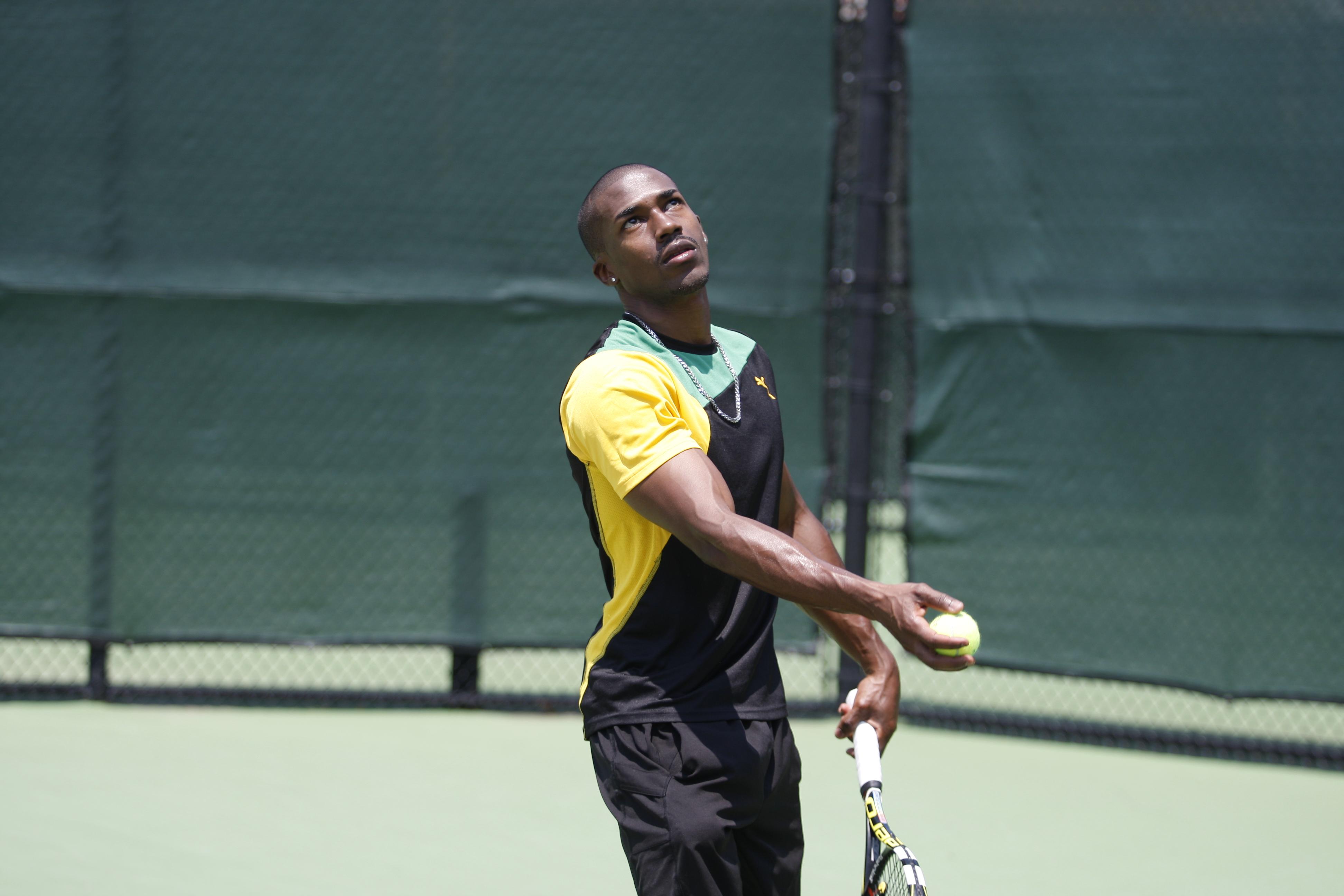
When learning the tennis serve, it’s important to avoid common mistakes that can hinder your progress One common mistake is using too much arm strength instead of utilizing proper body mechanics Your legs, hips, core muscles should all play a role in generating power for an effective serve
Another mistake is neglecting proper toss placement A consistent toss location ensures better timing and contact with the ball while minimizing errors caused by misalignment
Lastly, rushing through the service motion without maintaining a fluid rhythm can lead to inconsistent serves or loss of power
By focusing on these pro tips and strategies, mastering different types of serves, mentally preparing before serving, and avoiding common mistakes, you can enhance your serving skills and increase your chances of success on the tennis court
Useful Links

How to Serve in Tennis: 7-Step Tennis Serve Tutorial – 2023
How To Teach the Tennis Serve to Adults
How to Serve a Tennis Ball (with Pictures)
Is learning proper tennis serve supposed to be this hard?
How to improve your Tennis Serving technique in 5 easy …
How to Serve in Tennis: 6-Step Guide
A Beginner’s Guide: Serving Fundamentals
Tennis Serve Drills
PlayYourCourt Serve Mastery Clinic
Tennis rules: Know how to play
5 Tennis Serve Tips for Better Technique & More Power
Tennis Serve Course Review : Serve Unlocked
How To Return A Tennis Serve Like A Pro
Tennis Training Aids – Serve Aids
3 Tennis Drills to Improve Your Serve
Learn to serve – Tennis für Anfänger
Best way to learn tennis on my own?
Tennis Serve Types, Drills & Practice
Tennis Serve | What is the best serve in tennis?
A Step-By-Step Guide To Mastering The Serve

